Villa de Leyva Travel Guide
Discover Villa de Leyva: Historic town explorations and local museums
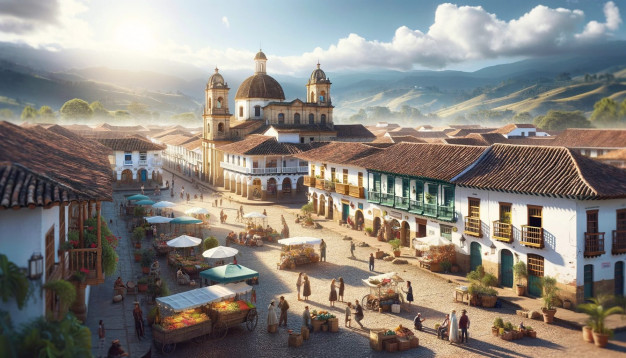
Although very traditional, Villa de Leyva has developed its offer of boutique hotels, art galleries, gastronomic restaurants, and local craft shops to satisfy the growing number of visitors.
Villa de Leyva Essentials
- Things to see in Villa de Leyva : Take advantage of the famous Plaza Mayor, where the cathedral, a small 17th-century building, and the house of Juan Castellanos are located, then continue on to the Plazoleta del Carmen, the Antonio Ricaurte Park, and the Plazoleta Antonio Nariño.
The stone streets and white facades welcome travelers arriving in Villa de Leyva, a municipality in Boyaca that is part of the Network of Heritage Towns of Colombia and can be reached from Bogota in about three hours by land to the northeast of the city. Founded on June 12, 1572 and renowned for its colonial architecture, Villa de Leyva lives with intensity in the 21st century but shares its history with those who visit it.
Every corner of this beautiful town of Villa de Leyva has a story to tell us the past is alive with its inhabitants who keep all their tradition.
Where is Villa de Leyva ?
Villa de Leyva is located east of Tunja, between the mountains of Iguaque and Merchán. The trip between the capital of Boyacá and Villa de Leyva is 39 km long and takes 30 minutes in cars and small buses on paved roads.
Where to Stay in Villa de Leyva ?
In the urban area of “la Villa” and its surroundings, a large number of hotels, hostels, camping areas and rest homes for the elderly, which have the National Tourism Registry (RNT), have been put into operation. There is something for all tastes, budgets and needs. They are in keeping with nature, preserve the architectural characteristics of the population and have, as far as possible, elements and furnishings native to the region.
Climate In Villa de Leyva
Due to the unique nature of its climate (temperature and humidity conditions), the place attracted many remarkable people seeking a better life. Nowadays, with the advance of science and communications, it has been realized that the environmental conditions for good health are hardly surpassable in other regions of the world.
What are the best Things to do in Villa de Leyva ?
Some of the tours to enjoy in Villa de Leyva and its surroundings:
- La Periquera Ecological Park
- Terracotta House
- Pozos Azules – Natural Swimming Pool
- Center for Paleontological Research
- Iguaque Lagoon
- Gondava Park
- The Muisca Observatory or “El Infiernito”
- Museum – El Fósil
Landscapes in Villa de Leyva
The landscape richness of “la Villa” is unique and varied; it goes from the green hills and mountains that surround the town and the valley, to some areas with desert ecosystem in where you can perceive the crops of the region and the peasant houses. All this, inside a vault with a light intensity that provides a spectacular coloring to the whole set of elements.
How is the Nightlife in Villa de Leyva
Restaurants, discos and bars, located around the square or just a few steps from it, invite you to enjoy the evening hours in a quiet and romantic atmosphere.
What are the Events, fairs and festivals in Villa de Leyva ?
Several festivals are held throughout most of the year, attended by people from all over the country. Guasca Music Festival (March), Festival of the Tree (May-June), Birthday of the Villa (June), Festival of the Kite (August), Festival of Festivals (September), Festival and Reign of the Onion (October), Festival of Lights (December).
How to get to Villa de Leyva
Get to Villa de Leyva Renting a car
If you want to take a road trip in Colombia and have the freedom to visit the area at your own pace, a good idea is to rent a car. Here you can compare the available offers and rent a car at the best price.
Renting a car with Driver
If you want to move freely in Villa de Leyva and don’t want the hassle to drive yourself, we highly recommend to hire Oscar from Bogota Car Service. He speaks perfectly english and love to make you Discover Bogota and surroundings. He has 5/5 ratings on 43 reviews on Trip Advisor, recommended 100%
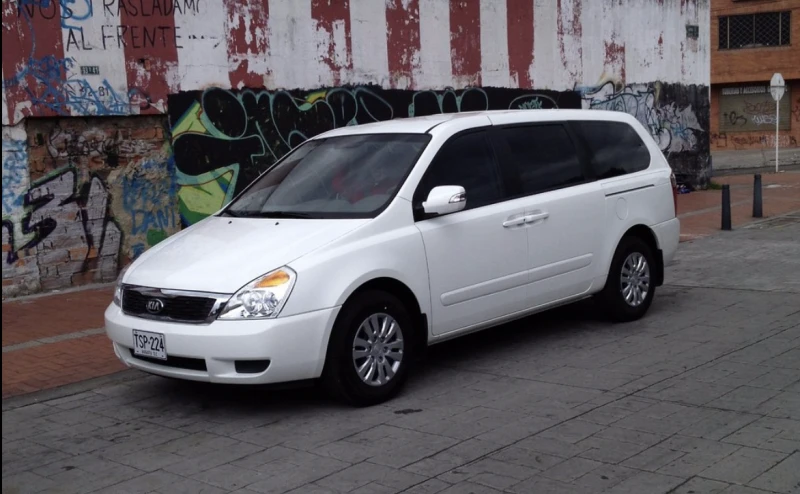
How to get around in Villa de Leyva
When you intend to travel from Villa de Leyva to places of tourist interest or to any of the surrounding municipalities, it is suggested to use the services of municipal public cabs, with regulated rates, or certified tourism companies operating in the area.
Tips and recommendations for travel to Villa de Leyva
Tourism and the agricultural sector provide economic sustenance to the inhabitants of the region, in addition to the natural vocation of many residents who, by tradition, have made of their traditional and handmade artistic works, products that are sold on a considerable scale in the national market. some tips for your trip to Villa de Leyva
- If you are traveling to Villa de Leyva from Bogota, take the bus from the Bogota terminal to Tunja that leaves every hour and from there to Villa de Leyva.
- If you leave from Bogota on the northern highway, the city is approximately 6 hours away.
- Please note that the total weight of baggage allowed as cargo on small aircraft must not exceed 10 kilograms.
- You can find restaurants with dishes from $16,000 to $30,000.
- Villa de Leyva is a destination with colonial architecture in very good condition, it is a very safe place and its nightlife is very lively, the restaurants close at approximately 12 o’clock at night.
- The weather is cold but it is a very warm town, besides its colonial cobblestone streets invite you to walk around the place.
- The ideal is to arrive by car because the distances between the attractions and the town are somewhat distant but there are cabs available; another point to consider is the budget.
- It is important to take light, quick-drying clothes that can be easily washed in the shower; it is more cost-effective to buy and replace them on the way than to take things that in the end will not be used and will add weight.
- Accessories: Hat, glasses and handbag to carry (cell phone, wallet, documents, money, earphones, camera, charger).
What to Eat in Villa de Leyva ?
The food of Villa de Leyva are products of the region: potatoes, corn, onions, tomatoes, beef and pork, and a variety of vegetables and fruits, which are used in the local cuisine, along with products from 28 other parts of the country, and are combined to make delicious dishes, including: cuchuco de trigo con espinazo, longaniza, rellenas and other sausages; mazamorra chiquita, ajiaco, envueltos or bollos de mazorca, tamales and arepas. In addition, as in the entire department of Boyacá, the famous “asados a la brasa” have a great representation.
As “la Villa” is a small sybaritic place and a center of tourist attraction, both for people from Colombia and from other parts of the world, the gastronomy has been diversifying and internationalizing; for example, there are Italian, French, Spanish restaurants, snack bars, pizzerias and fusion cuisine.
As a result of the appreciation of gastronomy as an essential element of good living, a qualified school dedicated to the teaching of haute cuisine has been set up.
Can I buy souvenirs in Villa de Leyva ? How is the Handcraft ?
In Villa de Leyva, handicraft activities such as ceramics, wool weaving, tapestry, jewelry, leather goods, wrought iron, furniture making, fretwork and wood carving are some of the most important.
The typical handicrafts of the region are very varied, basketry and hat weaving, woven in virgin wool, clay pots and ceramic pieces.
There is a wide variety of fabrics in virgin wool, acrylic wool, fique, yarn, cotton, twisted wool, spun and unspun wool, and synthetic fibers. In recent years, a handcrafted fashion industry has developed, with garments with innovative designs and colors, as well as the production of tapestries and rugs. In the field of textiles made on looms, blouses, shirts and shawls in raw colors stand out.
Villa de Leyva has a large number of craft stores in the city center, the Calle Caliente and around the main square where you can buy handmade toys, jewelry and costume jewelry, handicrafts from other regions of the country and decorative pieces.
Things to do in Villa de Leyva
Villa de Leyva is, in its architectural and landscape, a place of maximum interest for the tourist. But we must point out the following sites that offer a particular attraction.
Main Square of Villa de Leyva
The old town was established around the Plaza Mayor. It is the epicenter of Villa de Leyva and the largest square in Colombia. Its total area comprises 14,400 mt2.
Its general appearance preserves the atmosphere of the colonial era, especially for its cobblestone floor and the Mudejar basin that adorns the center, used in other times to supply water to the population. On the eastern side is the Church of Our Lady of the Rosary.

It is the scene of the most important commemorations and festivities. In its perimeter are located the mayor’s office, the parish church, hotels, houses of historical and cultural value, tourist agencies, craft stores, restaurants and buildings that preserve the colonial content of the Villa.
During the time of terror, 1816, a tragic year for the independence cause, it was the scene of the execution of Leyvan patriots.
Villa de Leyva Historical Center
The Historical Center of Villa de Leyva is typical Spanish of the sixteenth and seventeenth centuries with buildings of great historical and cultural importance. Its cobblestone streets evoke a romantic style that combines harmoniously with white facades and balconies.
Plazuelas, made up of 94 blocks of white facades and charming details combined with balconies and clay tiles, which along its streets offer visitors the delight of feeling immersed in the charm of a unique atmosphere. A walk during the day or at night is one of the best plans offered by this wonderful place.
Villa de Leyva Market Square
Plaza de Mercado de Villa de Leyva is located on Carrera 6 between streets 12 and 13. Large stage in which on Saturdays is concentrated a typical regional market, which is attended by farmers and small traders of the region, with their crops. Its importance lies in that it allows to know and to acquire in a single place what the zone produces in the matter of food, crafts and other elements. It is recommended to visit between 7 a.m. and 3 p.m.
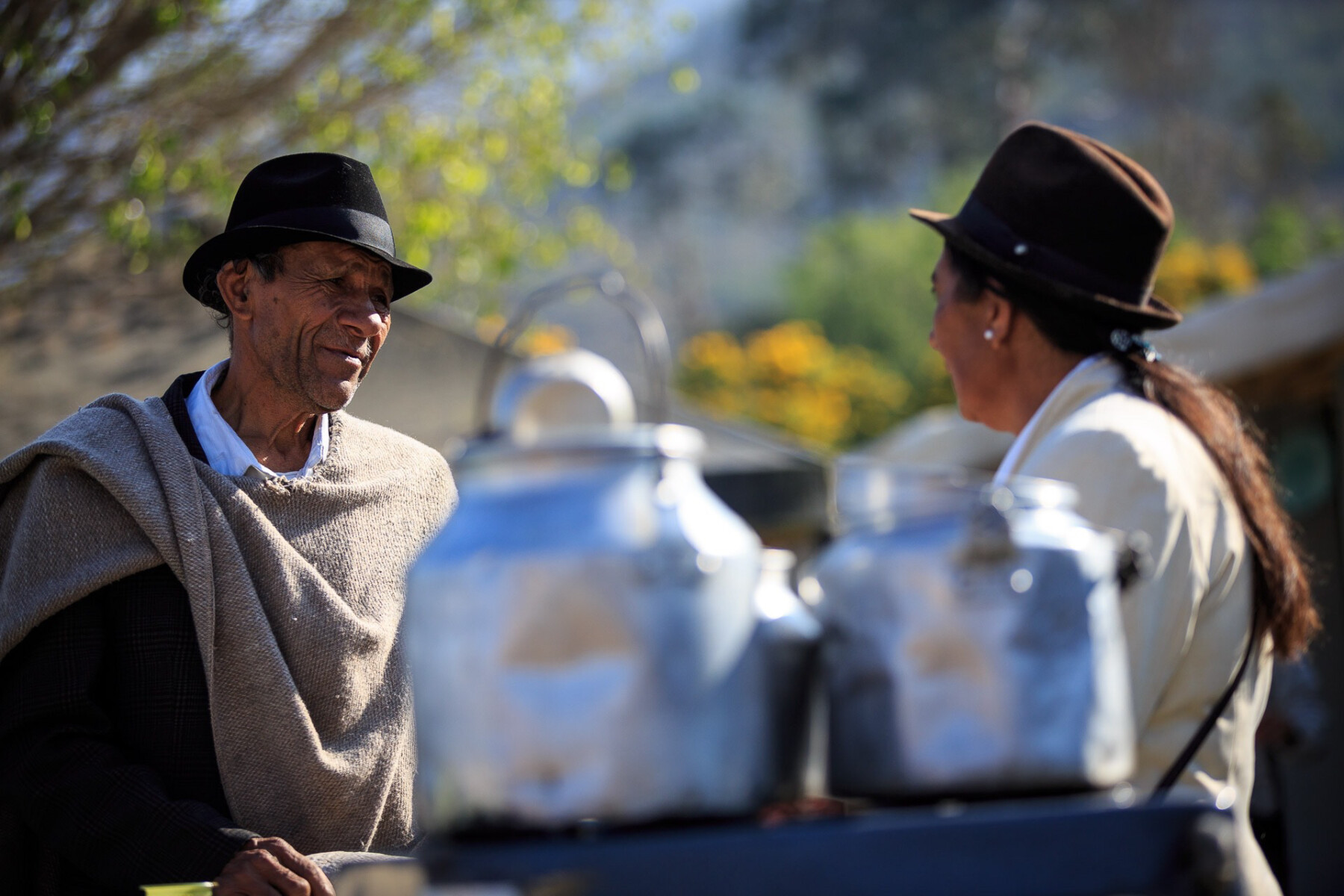
Museum of Religious Art of El Carmen (Plazoleta del Carmen)
The Museum of Religious Art of El Carmen was opened to the public in 1971. It exhibits beautiful paintings with religious themes, made by important masters from the seventeenth century to the twentieth century. It has six thematic rooms, among which stand out the room of religious art, with paintings like the one of Santa Teresa de Avila and the Apotheosis of the Virgin; the room of books and parchments, with works of the XVIII and XIX centuries; the room of the crucifixes and the room of colonial carpentry.
Moniquira Archaeological Park, El infiernito
This ancient astronomical center allows to understand the knowledge and rituals of the Muiscas civilization.
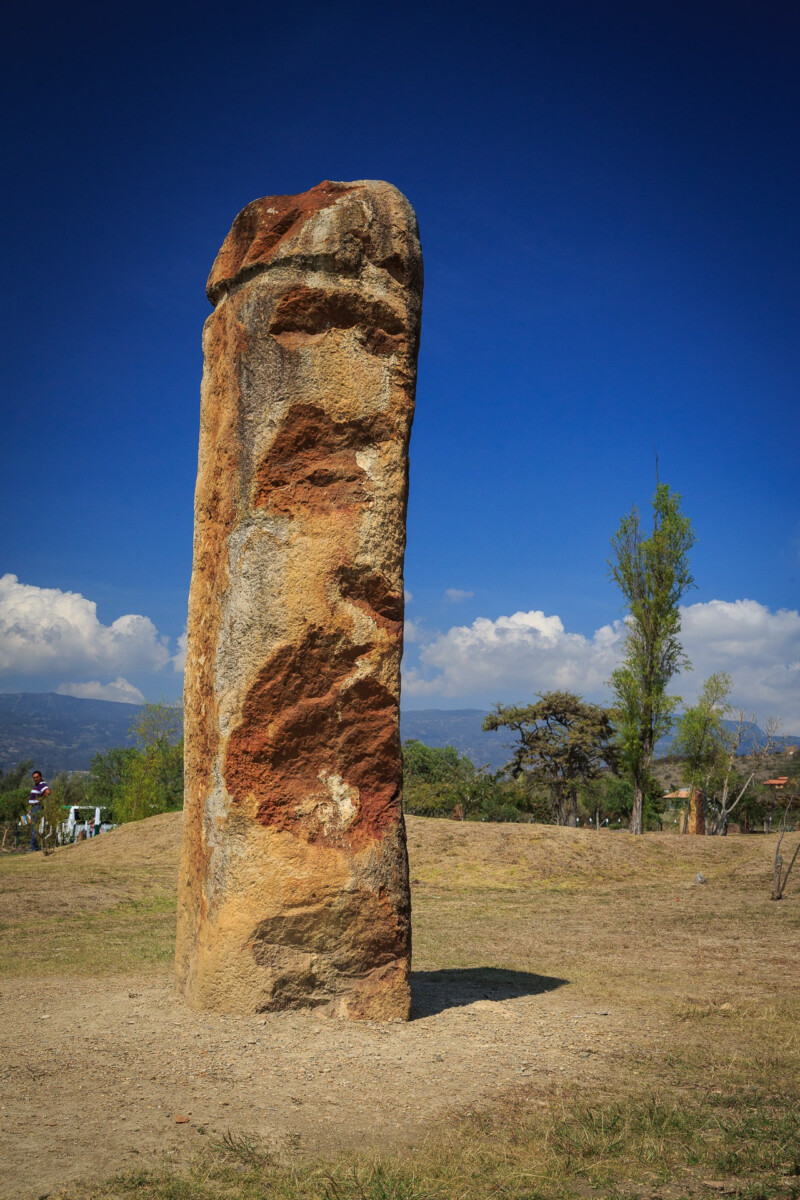
Casa Terra Cota
This house is a work created by a Colombian architect. It is the largest terracotta piece in the world. The decoration is absolutely masterful
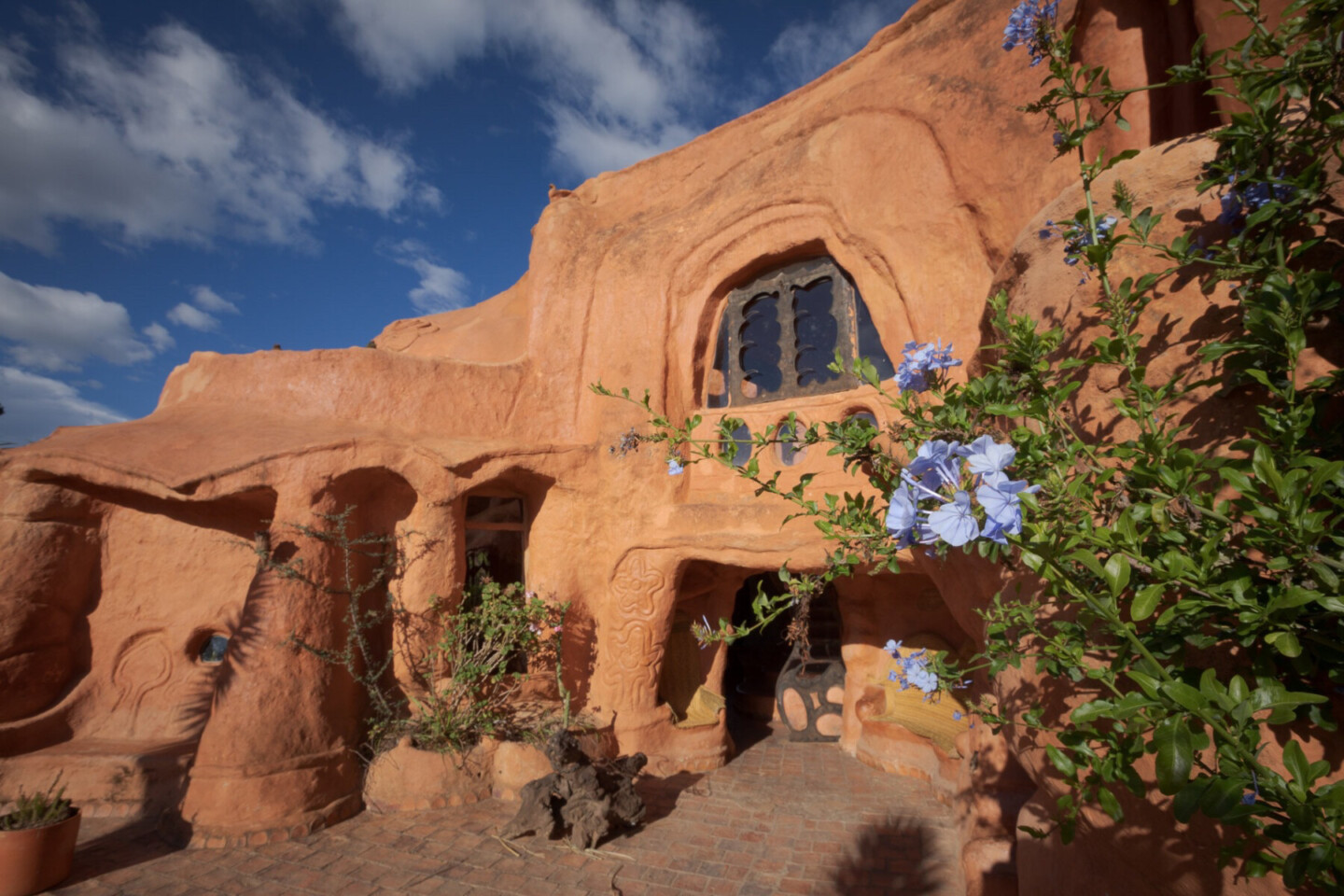
Convent Santo Ecce Homo
The Monastery and Sanctuary of Santo Ecce – Homo Located 10 km. away, on the road that leads from Villa de Leyva to Santa Sofia, deviating one kilometer by a small unpaved road.
It was founded in 1620 by the Dominican Fathers, in compliance with the mandate of the General Chapter of Valladolid in 1605, to evangelize the region.
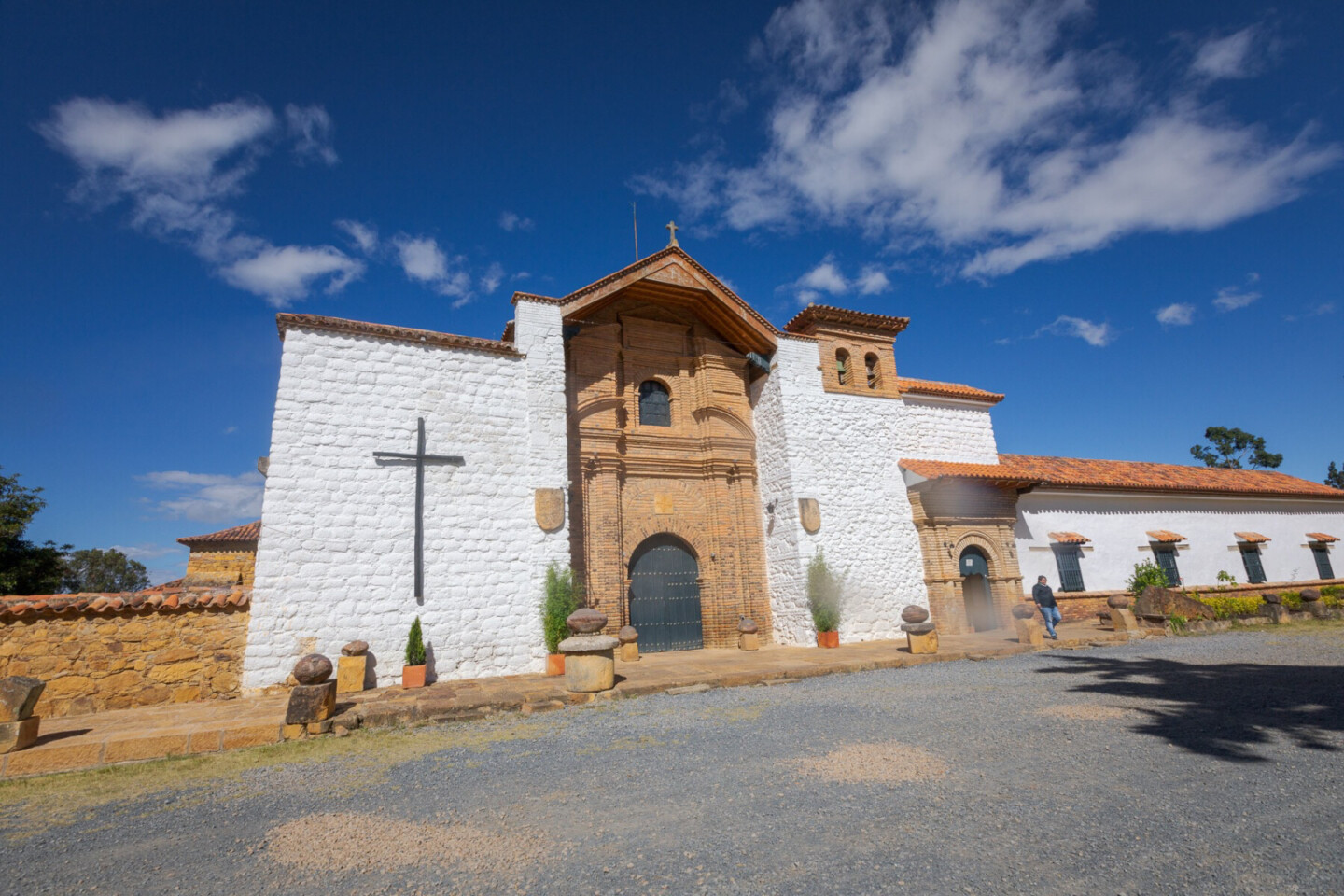
This Dominican monastery offers a resourcing setting thanks to a flowered patio and beautiful columned arcades.
Inside, a small museum retraces the colonial history and the process of evangelization of the Indians by the Spaniards.
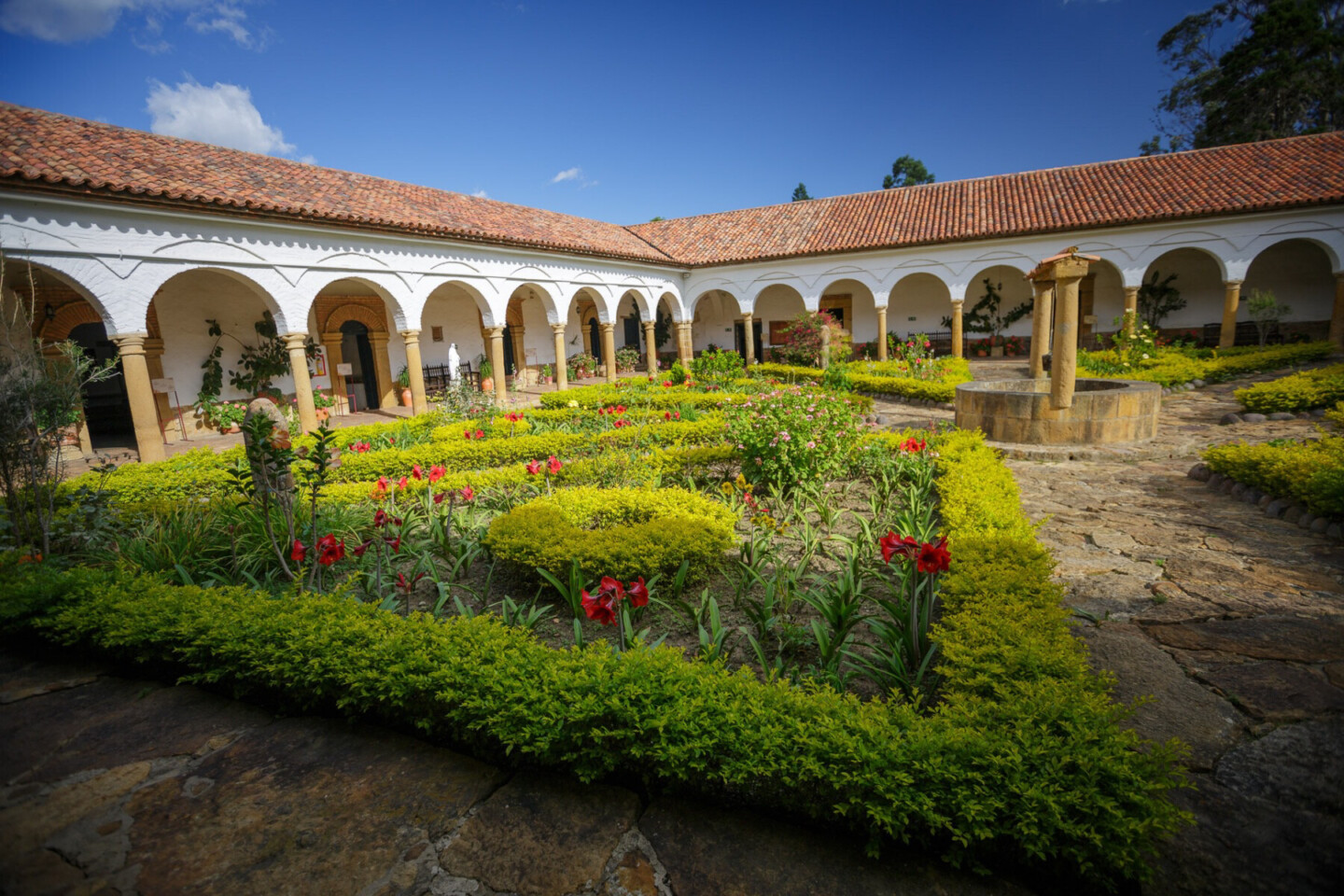
Fossil Museum
In the village of Monquirá, only 6 km. from the municipal capital of Villa de Leyva and after a 10 minute drive, is located this important scientific center Fossil Museum, which exhibits a variety of marine fossils (found in the valley), especially that of an ichthyosaur of 7 m. in length, in whose contour and for easy recognition, a functional installation was adapted. it is considered the prehistoric animal inhabited these lands 100 or 150 million years ago.
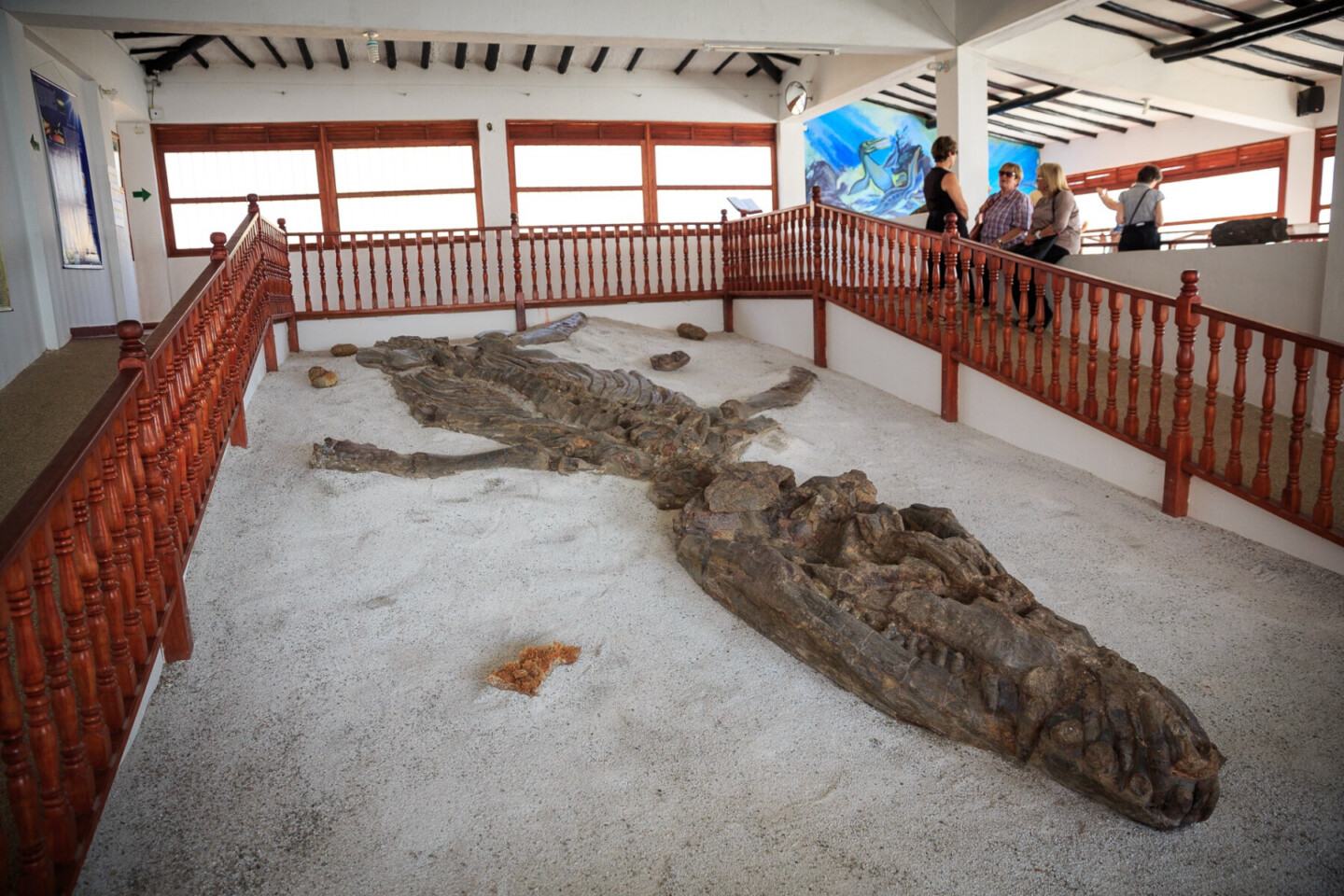
Antonio Nariño Park
Nariño Park was built in honor of the precursor of _independence Antonio Nariño_who died in Villa de Leyva. We can also observe a bust erected to the hero and four sculptures made in iron of the present time. Also a garden that surrounds the whole park and the date palms of an age of 30 years approximately.
Things to Visit Near Villa de Leyva
Pottery village of Raquira
At 30 minutes from Villa de Leyva, the village of Raquira with its colourful walls thrives.
The traditions of pre-Columbian civilizations have crossed the centuries to present you the most beautiful pieces of craftsmanship, including beautiful pottery.
Note: A colourful market is held in the centre of the village every Sunday.
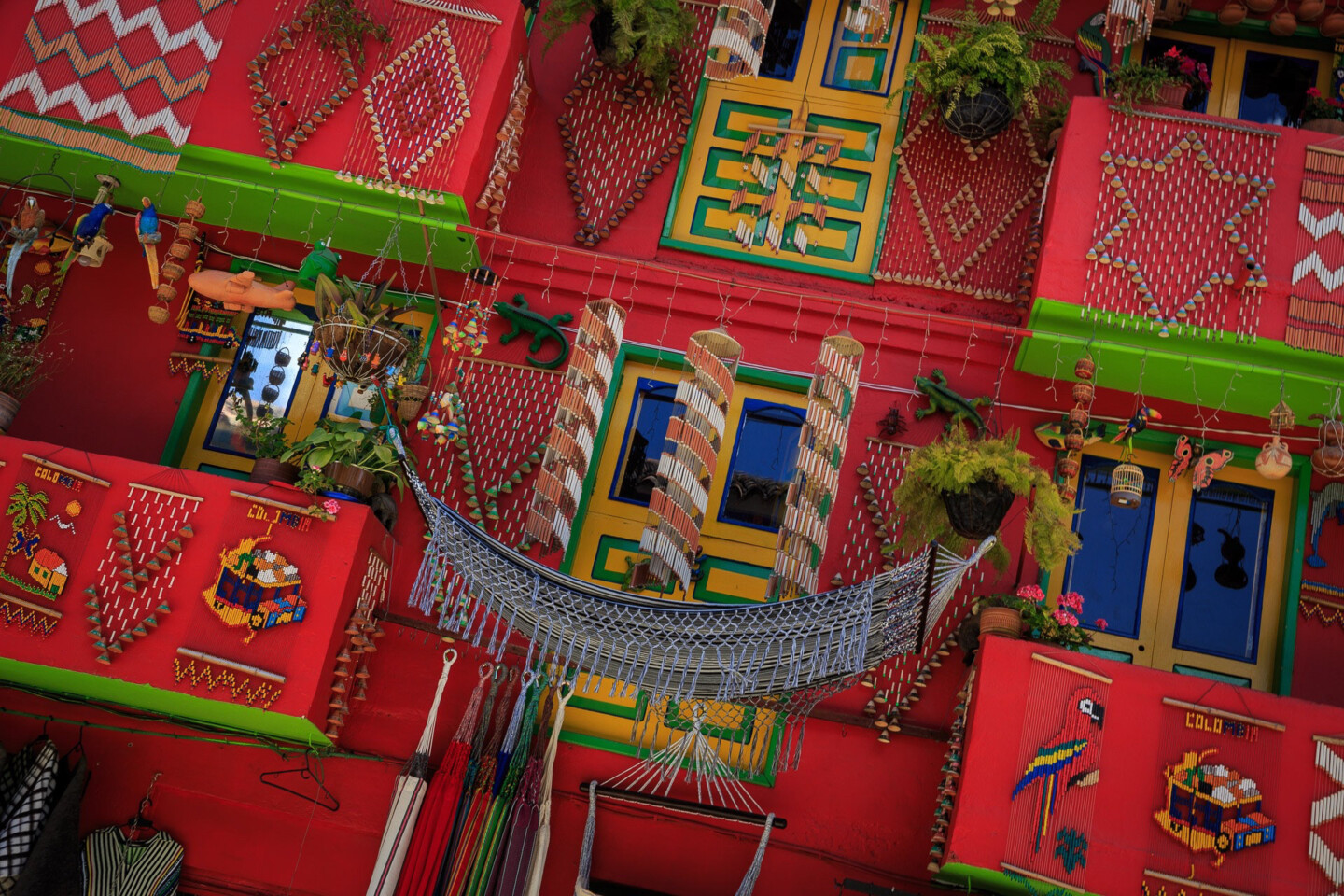
Zipaquira Salt Cathedral
In the colonial village of Zipaquira, there is a quite extraordinary cathedral: it is dug in a salt mine! This architectural feat attracts ecotourists, Catholics and geology enthusiasts.
Among the important elements of this site are:
The Way of the Cross, a gallery leading to the dome in which various altars are carved.
The Dome, with its huge cross carved in bas-relief.
From here one can descend to the balconies over the rooms, the choir and the stairs of the Narthex labyrinth.
The Cathedral’s naves, decorated with sculptures and flanked by imposing columns.
Namely: the church that is currently being visited is a replica of the original cathedral.

> How to get to nearby tourist attractions
When you intend to travel from Villa de Leyva to places of tourist interest or to any of the surrounding municipalities, it is suggested to use the services of municipal public cabs, with regulated rates, or certified tourism companies operating in the area.
Handicrafts in Tínjaca
In the municipality of Tinjacá, products are made from tagua, a seed of great hardness that, due to its consistency and appearance, resembles ivory, which is why it is known as “vegetable ivory“. Of extreme curiosity are the chess sets made by Master Bonilla, miniatures of less than two centimeters on each side, which are a true Guinness record. Various games and ornaments, cribs and mini sculptures, among others, are produced in this material.
In several workshops in the region, wool products such as ríales, ruanas, scarves, etc. are made.
Villa de Leyva Travel FAQ
How is the Internet & Wifi in Villa de Leyva ?
Either in some of the hotels or in several internet cafes, located near the main square, they provide internet access and national and international calls through an excellent communications network.
Are there ATM’s in Villa de Leyva ?
Three banks provide their services in “la Villa”: BBVA, Banco Popular, Banco de Bogotá, Davivienda and Bancolombla; and, among them, two are located on the south side of the Plaza Mayor, and one on Carrera 9, SO meters from the Plaza Mayor.
Each of them has an ATM, two ATMs and one Servlbanca, where transactions can be made with all domestic and foreign banks.
Can I change Money in Villa de Leyva ?
Bancolombia provides foreign exchange services to foreigners, generally US dollars. The presentation of the corresponding passport is required.
Villa De Leyva Wiki
Paleontology in Villa de Leyva
The presence of fossils of marine, amphibious and terrestrial habitats, of animals and plants that lived in the region before 10 million years ago, contributes to universal science.
The evidence of a rich region inhabited in the Cretaceous period is consolidated by the findings and discoveries of a large number of fossilized animals and plants.
Archeology in Villa de Leyva
Prior to the arrival of the Spaniards, the region was inhabited by its ancient inhabitants, the “Muiscas”, who, with their scientific and artistic vocation, left as vestiges of their culture several pictograms and cave paintings, made in Sáchica, along the Sutamarchán river and other areas of the region influenced by them.
The most important vestige is the “Astronomical Observatory of Zaquencipá”, formerly known as “El Infiernito”, in which there are 30 major phallic-shaped columns, located in a dispersed manner, and others of lesser height, aligned in two rows, arranged with the orientation of the solar cycles and movements.
Events, fairs and festivals in Villa de Leyva
Festivals In Villa de Leyva several festivals are held throughout most of the year, attended by people from all over the country. Guasca Music Festival (March), Festival of the Tree (May-June), Birthday of the Villa (June), Festival of the Kite (August), Festival of Festivals (September), Festival and Reign of the Onion (October), Festival of Lights (December).
Typical Food Of Villa De Leyva
The basic ingredients of Boyaca’s cuisine are corn, tubers and vegetables. Within the typical menu we find the arepas, almojábanas, corn wraps and all kinds of dough and snacks. Soups are traditionally a main part of the gastronomy such as corn mazamorra, cuchuco de trigo, mondongo, mute de maíz or mazorca, ajiaco, cazuela boyacense and caldo de costilla among others.
The roasts of lamb, beef and pork in wood ovens are popular. The piquetes de gallina criolla, the trout and the famous fritanga that is composed of longaniza, stuffed, chorizo, chicharrón, pork ribs, potato, plantain and other components according to the taste of the cook.
As for sweets in Villa de Leyva are popular
Besos de Novia, sponge cakes covered with meringue and a variety of desserts prepared with milk, mantecadas and cakes.
Handcraft
In Villa de Leyva, handicraft activities such as ceramics, wool weaving, tapestry, jewelry, leather goods, wrought iron, furniture making, fretwork and wood carving are some of the most important.
The typical handicrafts of the region are very varied, basketry and hat weaving, woven in virgin wool, clay pots and ceramic pieces.
There is a wide variety of fabrics in virgin wool, acrylic wool, fique, yarn, cotton, twisted wool, spun and unspun wool, and synthetic fibers. In recent years, a handcrafted fashion industry has developed, with garments with innovative designs and colors, as well as the production of tapestries and rugs. In the field of textiles made on looms, blouses, shirts and shawls in raw colors stand out.
Typical Beverages Of Villa De Leyva
Chicha: Fermented corn drink. It is a drink that was already consumed by the indigenous people in pre-Hispanic times. The secret of its preparation has been preserved through the ages and is still the preferred drink of the peasants and inhabitants of the region. It is the most typical drink in Colombia.
Guarapo: It is a drink prepared with sugar cane honey and water. This mixture is cooked and left to ferment. This drink is consumed as
refreshment by farm workers.
History of Villa de Leyva
In the place now occupied by Villa de Leyva, during the Cretaceous period, about 140 million years ago, there was an epicontinental sea that had communication with the primitive Caribbean Sea and the Pacific Ocean. This sea slowly withdrew from the region giving way to areas dominated by lakes and rivers.
The Muisca people settled in the territory of the Upper Saquencipa Valley and formed one of the main indigenous settlements because the main astronomical observatory was located there 4,000 years ago, which together with the Iguaque Natural Sanctuary constituted an important ritual center for worship and product exchange. Important archaeological records have been found from this culture, such as cave paintings, petroglyphs and other vestiges.
Around 1553, the first evangelizing expeditions arrived and erected a doctrinal temple of which today there are ruins known as the Temple of Monquirá.
Officially the foundation of Villa de Leyva occurred on June 12, 1572 by order of the President of the New Kingdom Don Andrés Díaz Venero de Leyva so that it could be inhabited by the soldiers who participated in the conquering expeditions and were unemployed affecting the social tranquility in Tunja. For this
mission was entrusted to Don Hernán Suárez de Villalobos.
The map corresponding to the location of each property is the oldest known in Colombia from the time of the founding of a Villa.
The following year the Spanish crown received a lawsuit for invading indigenous territory according to the Law promulgated in 1542 by Charles V. Two years later the Villa was moved to the place it occupies today. In a few years the population grew considerably due to the increase in the number of Spaniards arriving in America.
One of the first houses built was that of the chronicler Don Juan de Castellanos and around the Plaza the rest of the houses were built giving origin to the blocks and streets.